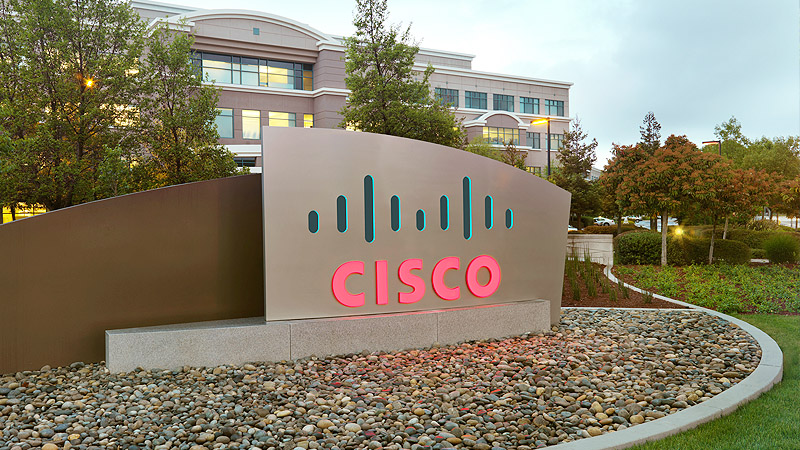To help service providers reduce operating expenses and drive new revenue streams embracing the Internet of Everything (IoE), Cisco today announced it has added the Cisco WAN Automation Engine (WAE) to its Evolved Services Platform (ESP), marking another key milestone in the company’s network function virtualization (NFV) and software-defined-networking (SDN) strategy. These new capabilities will provide service providers with tools they need to analyze, visualize and control functions across multi-vendor, wide area networks (WAN).
With worldwide mobile data traffic projected to increase nearly 11-fold during the next four years, more pressure than ever will be placed on the foundation supporting it all – the network. The explosive growth of the IoE presents service providers with a significant business opportunity, but it is difficult to obtain a global view of available capacity and its associated utilization by different services over the IP network. This impedes overall network optimization.
The Cisco® WAE offers service providers capabilities that reduce operational expenditures and enable applications that can increase revenues. Given the fluctuating network bandwidth needs of service providers, the Cisco WAE automates bandwidth scheduling and calendaring, circumventing congested network paths and delivering “bandwidth on demand,” which can be used and purchased only when needed. Automating these functionalities can deliver a more than 90 percent return on investment (ROI) during the first year of deployment and a total cost of ownership (TCO) reduction of up to 45 percent.
WAE builds on the success the Cisco advanced network planning, design and traffic management software solution – MATE – which is currently deployed by more than 60 leading global service providers, including TDS Telecom (TDS), WOW! and XO Communications. Service providers worldwide are using MATE to optimize the network in a variety of ways, such as predicting the effects of traffic demands and better understanding hotspots and costly chronic congestion. By integrating MATE with WAE, service providers can extend MATE’s capabilities and bring new levels of visibility, reliability and stability to IP traffic management and control.
Technology Highlights – Cisco WAE and MATE
- Situational and Predictive Analysis: Uses historical traffic data and anticipated demand to produce real-time and predictive models that increase overall service velocity; calculates high traffic “what-if” analysis while offering solutions for ultimate load balancing; utilizes flexible policy routing to enforce latency and utilization constraints for overall network optimization.
- Traffic Visualization: Enables an accurate “total WAN” topology view with comprehensive modeling; collects and models traffic, equipment and topology data while maintaining the “state” of each and then maps everything together for holistic, real-time network transparency; utilizes time-sequenced global models to provide accurate forecasting across thousands of WAN nodes.
- Control and Automated Provisioning: Extends Cisco ESP advanced orchestration and management across the WAN and dynamically assesses total traffic views to allow on-the-fly WAN reconfiguration of path calculations.
Cisco’s Approach to Virtualization
“Service providers sit at the center of the IoE economy and have the ability to capitalize on the significant market opportunity it presents,” said Gee Rittenhouse, vice president of engineering, Cisco. “As the network grows in size and complexity, service providers must continue to roll out new services and focus on optimizing the network. Cisco is committed to providing a complete portfolio of virtualization offerings to help reduce costs and add even greater value by enabling increased agility and elasticity.”
With the industry’s most open, elastic and extensible approach to SDN, the Cisco WAE enhances the capabilities theCisco ESP, which is a key element of the company’s Cisco Open Network Environment (ONE) strategy. At the foundation of it all is the Evolved Programmable Network (EPN), which is the infrastructure layer consisting of physical and virtual devices working together to form an end-to-end unified fabric for a programmable network.
Customer Validation
Global service providers recognize the importance of using the Cisco WAE and MATE to deliver new experiences and expand revenue opportunities.
“We expect to implement Cisco’s WAN Automation Engine to intelligently map our services to our transport across our core using cutting-edge SDN technology,” said Henry Hou, general manager for the Network Platform Department at Tencent. “And, we anticipate significant cost reductions and highly efficient operations, even as we explore revenue-generating services using the WAN Automation Engine.”
“The WAN Automation Engine provides straightforward interfaces to allow us with our capabilities, to develop network-aware applications such as bandwidth calendaring, automated maintenance planning and dynamic network configuration based on quality-of-experience monitoring,” said Camillo Ascione, chief technology officer of Italtel. “Our mutual customers are ideally suited to benefit from Cisco MATE and its evolution towards WAE to control multivendor networks.”
“As our business grows and the complexity of our multi-vendor, best-of-breed network increases, we need agility in our planning cycles that only Cisco MATE Design is able to provide,” said Ken Paker, vice president of Network Services and chief technology officer, TDS.
“With Cisco Evolved Services Platform, XO delivers reliable networking service to our customers, including over half the Fortune 500, facilitating connectivity for a host of unified communications, data networking and mobility initiatives,” said Don MacNeil, chief operating officer of XO Communications. “Leveraging Cisco MATE for automated, multivendor networks of tomorrow enables seamless transport of voice and data between customer locations and their multi-cloud environments.”
“Cisco MATE Design shows us where we need to traffic engineer, optimize, or add or rearrange capacity on the fly,” said Eric Fligel, vice president, Network Engineering, Wow!. “We have a best-of-breed network, and the Cisco Evolved Services Platform portfolio was able to adapt to the underlying equipment from multiple suppliers. Ease of use, visibility, and complete support for our heterogeneous, multivendor networks are high benchmarks met by Cisco.”



